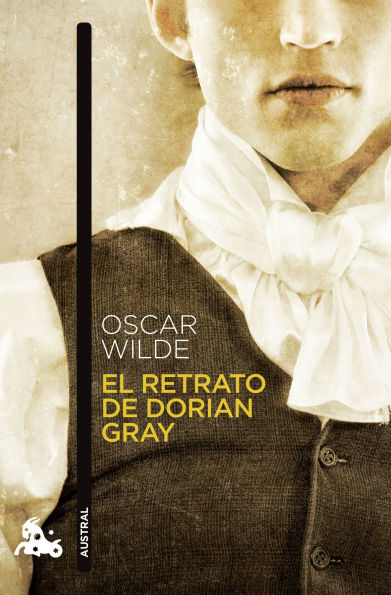Cuando se publicó El retrato de Dorian Gray, la crítica moralizante acusó a su protagonista de ser una figura satánica, corrompida y corruptora, sin comprender que era el héroe de una novela que reflejaba la fatalidad de los románticos: Oscar Wilde (1854-1900) había querido hacer de la belleza un refinamiento de la inteligencia; y para ello sumió a su protagonista en una atmósfera de perversión dominada por el arte y los poderes de un misterio que está más allá de la realidad.
Pero el autor no se conforma con la simple descripción: incrusta a su personaje en un crimen y, como Edgar Allan Poe en sus relatos, lo rodea de un misterio que la razón no puede explicar. Dorian Gray sigue siendo, más de cien años después de la muerte de su autor, una piedra angular en los debates entre la ética y la estética, en las relaciones que mantienen el bien y el mal, el alma y el cuerpo, el arte y la vida. Presidida por la ley de la fatalidad, Dorian Gray no deja de alcanzar el objetivo que el propio Wilde quería para su libro: «Venenoso si ustedes quieren, pero no podrán negar que también es perfecto, y la perfección es la meta a la que apuntamos nosotros los artistas».
ENGLISH DESCRIPTION
A cornerstone in the debates between ethics and aesthetics, in the relationships between good and evil, soul and body, art and life.
When The Picture of Dorian Gray was published, moralistic critics accused its protagonist of being a satanic, corrupt, and corrupting figure, not understanding that he was the hero of a novel reflecting the fatalism of the Romantics. Oscar Wilde (1854-1900) aimed to make beauty a refinement of intelligence; to achieve this, he immersed his protagonist in an atmosphere of perversion dominated by art and the powers of a mystery beyond reality.
But the author does not settle for mere description: he embeds his character in a crime and, like Edgar Allan Poe in his tales, surrounds him with a mystery that reason cannot explain. Dorian Gray remains, more than a hundred years after the author's death, a cornerstone in the debates between ethics and aesthetics, in the relationships between good and evil, soul and body, art and life. Governed by the law of fatality, Dorian Gray continues to achieve the goal Wilde wanted for his book: "Poisonous if you like, but you cannot deny that it is also perfect, and perfection is the goal we artists aim for."
Cuando se publicó El retrato de Dorian Gray, la crítica moralizante acusó a su protagonista de ser una figura satánica, corrompida y corruptora, sin comprender que era el héroe de una novela que reflejaba la fatalidad de los románticos: Oscar Wilde (1854-1900) había querido hacer de la belleza un refinamiento de la inteligencia; y para ello sumió a su protagonista en una atmósfera de perversión dominada por el arte y los poderes de un misterio que está más allá de la realidad.
Pero el autor no se conforma con la simple descripción: incrusta a su personaje en un crimen y, como Edgar Allan Poe en sus relatos, lo rodea de un misterio que la razón no puede explicar. Dorian Gray sigue siendo, más de cien años después de la muerte de su autor, una piedra angular en los debates entre la ética y la estética, en las relaciones que mantienen el bien y el mal, el alma y el cuerpo, el arte y la vida. Presidida por la ley de la fatalidad, Dorian Gray no deja de alcanzar el objetivo que el propio Wilde quería para su libro: «Venenoso si ustedes quieren, pero no podrán negar que también es perfecto, y la perfección es la meta a la que apuntamos nosotros los artistas».
ENGLISH DESCRIPTION
A cornerstone in the debates between ethics and aesthetics, in the relationships between good and evil, soul and body, art and life.
When The Picture of Dorian Gray was published, moralistic critics accused its protagonist of being a satanic, corrupt, and corrupting figure, not understanding that he was the hero of a novel reflecting the fatalism of the Romantics. Oscar Wilde (1854-1900) aimed to make beauty a refinement of intelligence; to achieve this, he immersed his protagonist in an atmosphere of perversion dominated by art and the powers of a mystery beyond reality.
But the author does not settle for mere description: he embeds his character in a crime and, like Edgar Allan Poe in his tales, surrounds him with a mystery that reason cannot explain. Dorian Gray remains, more than a hundred years after the author's death, a cornerstone in the debates between ethics and aesthetics, in the relationships between good and evil, soul and body, art and life. Governed by the law of fatality, Dorian Gray continues to achieve the goal Wilde wanted for his book: "Poisonous if you like, but you cannot deny that it is also perfect, and perfection is the goal we artists aim for."

El retrato de Dorian Gray (Novela gótica) / The Picture of Dorian Gray (A Gothic Novel)
288
El retrato de Dorian Gray (Novela gótica) / The Picture of Dorian Gray (A Gothic Novel)
288
Product Details
| ISBN-13: | 9786070735530 |
|---|---|
| Publisher: | Planeta Publishing Corporation |
| Publication date: | 02/25/2025 |
| Pages: | 288 |
| Product dimensions: | 4.90(w) x 7.40(h) x 0.80(d) |
| Language: | Spanish |
